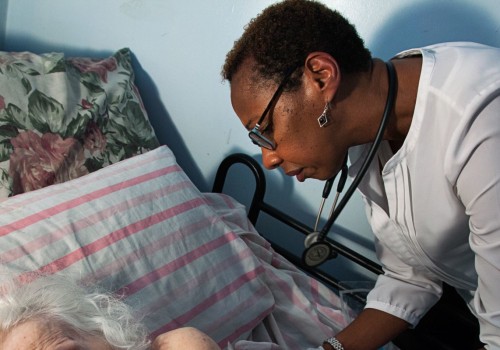Hospice offers four levels of care, as defined by Medicare, to meet the diverse needs of patients and their families. The four levels of hospice include routine home care, continuous home care, general hospital care, and temporary care. For most patients, hospice care is covered through the medical hospice benefit or other insurance plan. Medicare defines four different levels of hospice care.
The four levels of hospice defined by Medicare are routine home care, continuous home care, general hospital care, and temporary care. A hospice patient may experience all four or just one, depending on their needs and desires.
palliative care is specialized medical care
for people living with a serious illness, such as cancer or heart failure. Patients in palliative care can receive medical care for their symptoms or palliative care, along with treatment aimed at curing their serious illness.The goal of palliative care is to improve a person's current care by focusing on the quality of life of the individual and his/her family. Routine home care is a variety of services you get where you live. This care is for times when you are not in a medical crisis. Continuous home care is for times of crisis when a higher level of nursing care is needed.
These services can make it easier for you to stay home, even when your symptoms get worse. Ongoing home care means you need a nurse for at least eight hours in a 24-hour period. You may also get help from other hospice team members at the same time, but at least half of the care must be provided by a nurse. Foster care services are more for the family than for the person in hospice.
If someone doesn't qualify for ongoing or inpatient care, but the family is having a hard time, foster care may be an option. There is a five-day limit for foster care. After that period, the patient returns home. The most common type of hospice service is routine home care.
This is delivered to the patient's home, whether they live in their own home, an assisted living facility, or a senior health care facility. It will include visits from home health assistant nurses, registered nurse case managers, licensed practical nurses, social workers, spiritual care specialists, community educators and volunteers. Continued home care is a more intensive version of routine home care that provides round-the-clock assistance to help patients who experience acute symptoms such as uncontrollable pain or nausea, breathing problems, bleeding, agitation, seizures, or changes in consciousness. It is usually only carried out for a short time to help the patient stay at home in a difficult time.
For patients suffering from symptoms that cannot be effectively controlled through home care, general hospital care is recommended. This is usually short-lived and can be done in the hospice unit of a hospital or long-term care residence. Temporary care is a type of inpatient hospice care that is only done on a short-term basis, usually to give family caregivers a little rest. Caring for a loved one who is terminally ill can be physically and mentally exhausting, allowing caregivers to have time for themselves.
Temporary care can also be used when the patient needs a type of care that cannot be easily provided at home only for a short period. Harbor Light Hospice understands that every person's situation is unique and that each person needs a personalized care plan. Whether your loved one needs only mild help with daily activities or 24-hour care, contact the Harbor Light hospice team to learn how they can make this time easier. Provide palliative care for patients and at home, including respite care, with friendly, experienced support along the way.
While every hospice regime is different, there are four levels of hospice care. Here's a quick guide for each level. Routine hospice care can be provided wherever you call home; whether in a skilled nursing facility, assisted living facility, memory care, or in your own home. Hospice care is specialized medical care for terminally ill patients that aims to relieve their pain and allow them to live the rest of their lives in comfort.
The goal of hospice care is to help you live in peace, comfort and dignity until the time of death, including. A state-by-state directory of palliative care organizations can be found on the Hospice Foundation of America website. Hospices provide terminally ill patients with medical care, pain management, and spiritual and emotional support. A member of the hospice team visits regularly, and someone is usually always available by phone 24 hours a day, seven days a week.
In the United States, people enrolled in Medicare can receive palliative care if their healthcare provider thinks they have less than six months to live if the disease runs its usual course. If you or a loved one will need hospice services in Pittsburgh, here are a few things you should know about each type of hospice care. There are four main types of hospice care, and a patient may experience one or all of them during the time they spend with hospice. Hospice care designs treatments to meet the needs of patients, providing care in the comfort of their own homes.
While it is true that most people who receive hospice care are terminally ill, the goal of inpatient hospice services and home hospice services is to provide comfort and improve quality of life. . .












